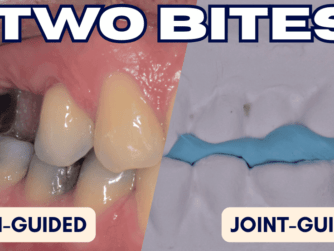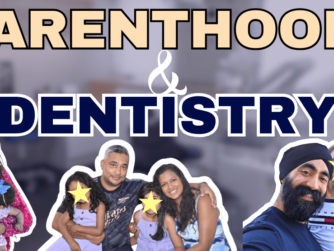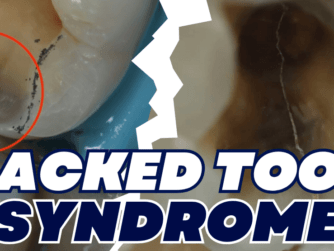Podcast: Play in new window | Download (Duration: 52:51 — 75.0MB)
Subscribe: RSS
Have you ever encountered the patient with all the signs of bruxism/parafunction, yet they deny this passionately? I see this daily. Patients are in denial that they parafunction – how can we communicate better with these patients?
I am joined on this Protrusive Dental Podcast episode by Dr Barry Oulton to help us communicate better with bruxers!
In this episode, which has a brilliant Protrusive Dental Pearl about ‘colouring in your dental splints’, we discuss:
- How to get patients to accept accountability of their parafunction and how it may attribute to restoration failure
- Are you looking for the signs of parafunction in your patients?
- Travell and Simon pain chart for referred pain
- Muscle examination video (linked below)
- The role of your team in communicating Bruxism
- How to show patients their wear facets
- What if your patient declines a splint? (They are allowed to!) How to communicate with them the consequences
- Have you ever restored an incisal edge that keeps chipping?
- Use analogies and stories to communicate – here we share the Fence Post analogy
- Sci splints and B splints
- How to PROVE to your patients with a splint that they have actively been grinding on it!

Dr Barry Oulton owned Haslemere Dental Centre in Surrey for 20 years, turning it into an award-winning practice with a reputation for outstanding customer service before joining the Portman Dental Care Group in 2018. In 2017, he founded The Confident Dentist Academy to help dental professionals learn effective communication skills and sell with integrity so they can have more impact and make a bigger difference, both professionally and personally.
His 2 day course ‘Influencing Smiles’ course teaches Dentists and their teams how to communicate and sell that translates into happy patients, a great working environment and, ultimately, sees profit increase. He also offer in-house training programming and coaching for practices and dental companies and also online training products.
He is on the editorial board for The Probe and lectures for companies such as Septodont, Cerezen, S4S, Practice Plan, Henry Schein and Wisdom Toothbrushes.
His website is –
www.theconfidentdentist.com
Take a look at his muscle exam video which is currently on www.theconfidentdentist.com/s4s which is very helpful demonstration of how to carry out a dentally relevant muscle examination.
Social media sites –
Twitter – @drbarryoulton
Facebook – The Confident Dentist
Instagram – drbarryoulton







